Photographic revolution sees Hastings portrayed in stereoscope
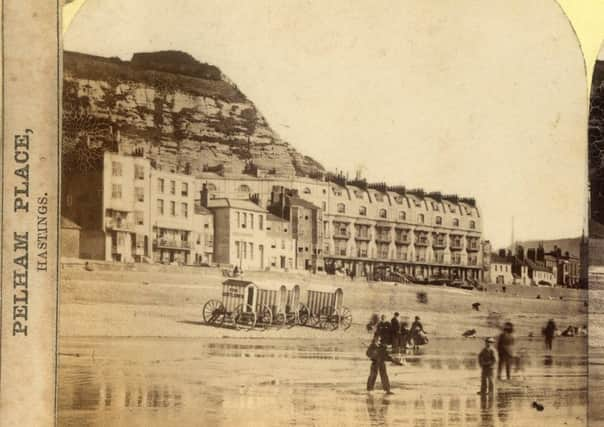

He writes. Last week we saw that local Hastings photographer F S Mann, of 13 Wellington Place, was producing local photographic views as cartes de visite (CdeV), a style which had been patented in Paris by photographer André Adolphe Eugène Disdéri in 1854.
A thin paper photograph, usually 54.0 mm (2.125 in) × 89 mm (3.5 in), was mounted on a more substantial and thicker paper card sized 64 mm (2.5 in) × 100 mm (4 in) – the accepted size of a visiting card - and the views were sold alongside his photographic portrait business producing images in the same format. But Mann didn’t confine his local views to the CdeV format, he also produced a considerable output of stereoscopic views as well.
Advertisement
Hide AdAdvertisement
Hide AdStereoscopy, also called stereoscopics, or stereo imaging, is a technique for creating or enhancing the illusion of depth in an image by means of stereopsis for binocular vision where a pair of stereo images could be viewed using a stereoscope.
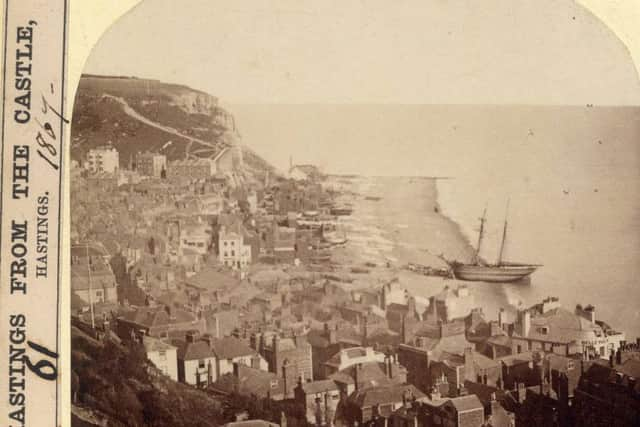

Most stereoscopic methods present two offset images separately to the left and right eye of the viewer and these two-dimensional images are then combined in the brain to give the perception of 3D depth.
The viewers ranged from the small and fairly basic hand – held viewers with a pair of lenses focussed on the pair of images to more elaborated table-top viewers produced in brass and mahogany with adjustment for focus and viewing angle. Others incorporated a cabinet to contain the cards which conformed to an overall size of 175mm x 85mm (7in x 3.4 in) with the individual images usually measuring 75mm x 80mm high (3in x 3¼in). This pair of images, in common with other photographs of the time, would be albumen prints on thin paper pasted onto the more substantial backing card. as demonstrated by the pier image, the remaining images only show, for reasons of space, a single image, either left or right, from each pair.
All illustrations throughout this series are from Ion Castro’s own collection and he can make available copies of many of the historic images used in this series. There’s more local history on Ion’s website, www.historichastings.co.uk or contact him - [email protected].
Captions:
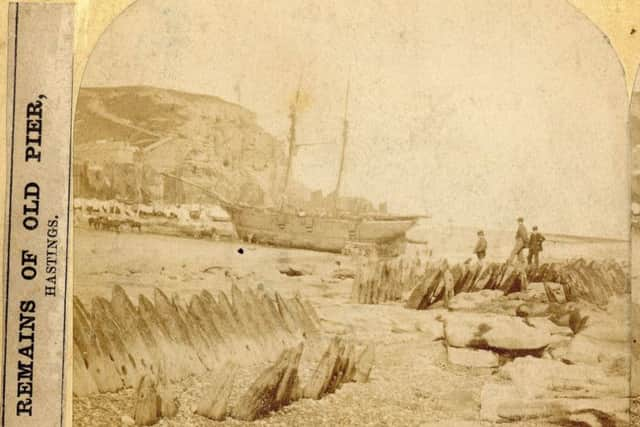

Carlisle Parade 2.
Advertisement
Hide AdAdvertisement
Hide AdThe right-hand image, looking east in the 1870’s with the Queens Hotel in the distance, The writing on the back of the bench reads ‘Hastings Local Board of Health’ In the 1930’s Sidney Little will widen the promenade here and incorporate an underground car park in the void beneath the road deck.
Carlisle Parade.
The right hand image, looking west and dated before 1872 because there’s no Hastings Pier yet and the Palace Hotel won’t be built until 1886 and notice the bathing machines on the left.
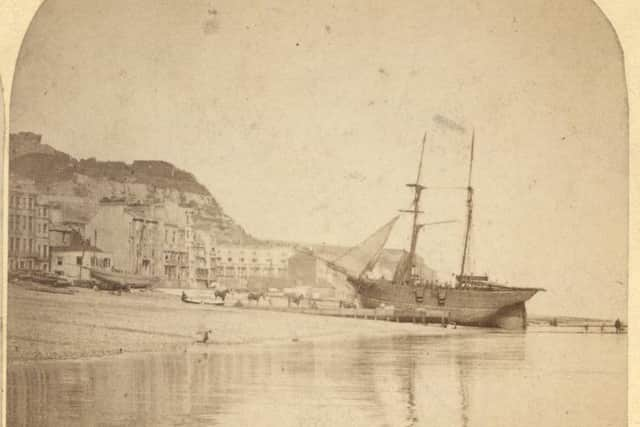

Carlisle Villas.
Left hand image, looking west and centred on the Queens Hotel, notice the pleasure yacht drawn up on the beach. By the 1930’s Sidney Little’s new promenade will cut across the centre of the picture.
Eversfield Place.
Right hand image dating from mid 1870’s, 60 years before Bottle Alley and the double-deck promenade were created.
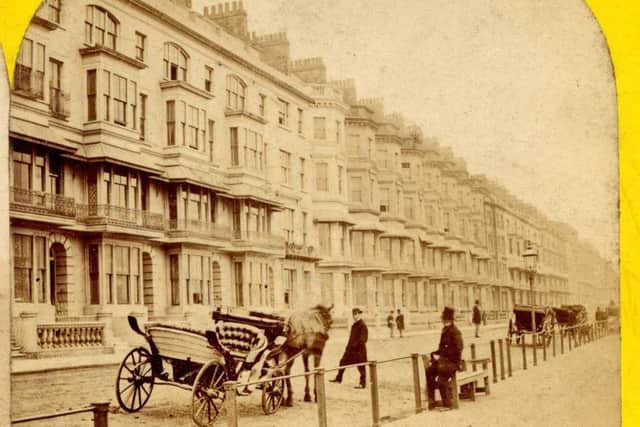

Hastings from the Castle 1867.
Advertisement
Hide AdAdvertisement
Hide AdThis left hand pane shows the view looking east and using Hastings Castle as a vantage point has been helpfully dated 1867 on the title bar. Hastings Harbour will have to wait another 20 years before work starts on its construction and the East Hill lift won’t be built until 1902. Notice the collier unloading in the centre of the image and the washing taken in by fishermen’s wives to supplement the family income drying on the beach.
Hastings from the East Hill.
This left hand image from the 1860’s looking west from a vantage point on the east Hill that is still popular today shows the view before work had started on building Hastings Pier by the end of 1869 and it opened in 1972. Notice the horse capstans in the foreground used for dragging the boats up the beach and the bathing machines along the shoreline in the distance.
Marina St Leonards.
Mann didn’t confine himself to Hastings, this right hand image from the end of the 1860’s shows the Marina at St.Leonards and a magnifying glass reveals Martello Towers beyond the line of railings. Tower 39 at Bulverhythe was demolished in 1886, beyond it tower No 40 had been undermined by the sea and was blown up by the Royal Engineers in 1873. Further west, tower 41 had already been demolished for materials having been almost washed away in 1842. The structure on the left is an ornamental shelter, not St.Leonards Pier, that will have to wait until 1888.
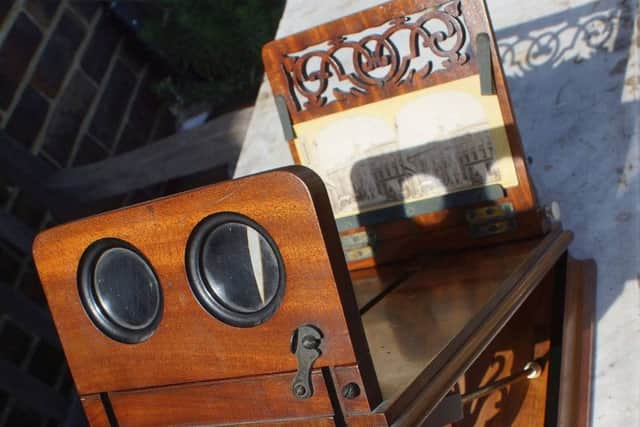

On the Beach looking West.
Centred on Robertson Terrace with the Queens Hotel that opened in 1862 on the right the view is similar today except that Sidney Little’s promenade now sits between the beach and the buildings. The sea wall at the top of the beach now forms the back of Sidney Little’s underground car park below the promenade.
On the beach.
Advertisement
Hide AdAdvertisement
Hide AdMann would not have had to carry his equipment very far to capture this image of a collier unloading at Denmark Place - notice the horses lined up to the left of the boat waiting to carry the cargo up the beach and the outfall pipe from the stream through Alexandra Park in the centre, is the boat using this as some sort of berthing aid?
Pelham Place.
Left hand image from the 1860’s showing Beach Terrace, demolished in the 1930’s for seafront imporovements, obscuring Pelham Crescent and, to its right the terrace that would become the Marine Hotel where the French Prince Imperial stayed in 1870 with his mother, the Empress Eugenie after the defeat in the Franco Prussian War of his father Napoleon III. The hotel was demolished in 1899 along with two houses to its left make way for the Hippodrome, now De Luxe Leisure. Sea bathing was segregated at that time and the bathing machines here are marked ‘For Gentlemen’. A proposal in 1897 to permit mixed bathing was turned down by the council because ‘the capers of the bathers might cause annoyance’.
Pier.
A complete stereo card showing Hastings Pier not long after it opened in 1872, the banner on the pier reads ‘The Band is now Playing’. In the foreground is the garden of the hospital that was replaced by 1927 with the White Rock Pavilion (now Theatre).
Remains of Old Pier.
A Collier is unloading beyond the remains of Hastings’ Elizabethan Harbour. The wooden stakes were intended to contain a rock core but the whole lot was swept away in a series of storms in the 17th century and is now buried below the shingle that has built up to west of the replacement harbour, itself never completed that was started in1896 and the structure has been decaying ever since. Washing can be seen dring on lines at the top of the beach.
Verulam Place.
Advertisement
Hide AdAdvertisement
Hide AdThis late 1860’s image pre-dates Hastings Pier (opened 1872) and is centred on the Grand Hotel, demolished in the 1970s and replaced with sheltered housing. There is speculation but no definitive answer to the origin of the name ‘Verulam’ after which this part of the seafront was named.
Viewer.
This 19th century viewer in Ion Castro’s collection does not have a maker’s name but is typical of late Victorian viewers and is made of mahogany with brass fittings, it’s designed for table-top use and is adjustable for viewing angle and focus. The apparatus folds flat when not in use.